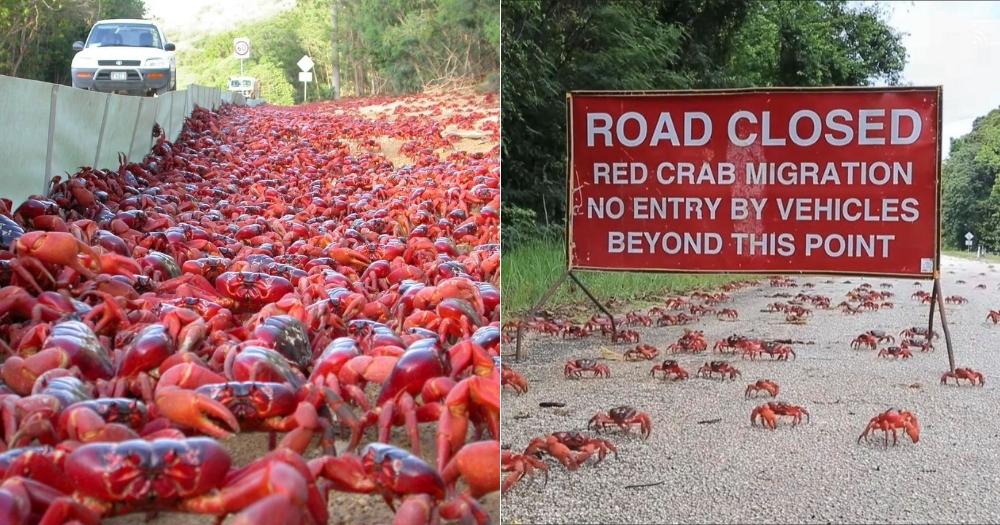Follow us on Telegram for the latest updates: https://t.me/mothershipsg
Why did the red crabs cross the road?
Well, for the Christmas Island red crabs, they are making their way to the ocean to reproduce.
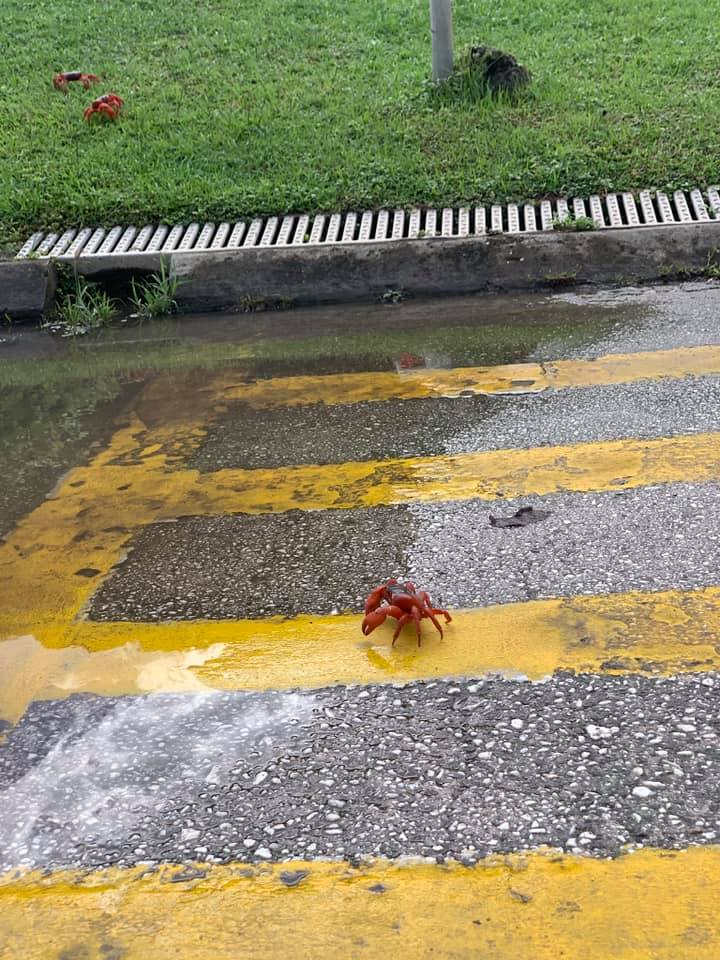 Image from Island Care Christmas Island/Facebook.
Image from Island Care Christmas Island/Facebook.
Like clockwork, tens of millions of red crabs emerge from the forests on Christmas Island and make their way to the ocean to breed at the end of the year.
This phenomenon is unique to Christmas Island, Australia, as the red crabs are endemic to the island. That means they can only be found on Christmas Island and not anywhere else in the world.
A yearly affair
These red crabs begin their journey upon the first rainfall of the wet season, which typically falls in October or November, but the migration can also start later in December or January.
This year, the red crabs' migration started right on schedule, as seen on Christmas Island Tourism's Facebook post on Oct. 29.
During this mass migration, the male red crabs take the lead by leaving their burrows and arriving at the coastline first.The female red crabs will soon follow suit and eventually outnumber the males on the coastline.
Red crabs across the island march together towards the ocean during this period as breeding is synchronised islandwide.
Peak red crab migration takes place in the early morning and/or late afternoon, before 10am and after 3:30pm, when it is cooler and there is more shade, as the red critters might die if they lose too much body water.
Veteran naturalist Sir David Attenborough described this mass migration as one of his greatest TV moments throughout his illustrious career documenting wildlife.
Here's Attenborough sitting and narrating right in the middle of a sea of Christmas Island red crabs in a 1990 documentary:
Road closure
To ensure safe crossing for these crabs, several roads were closed.
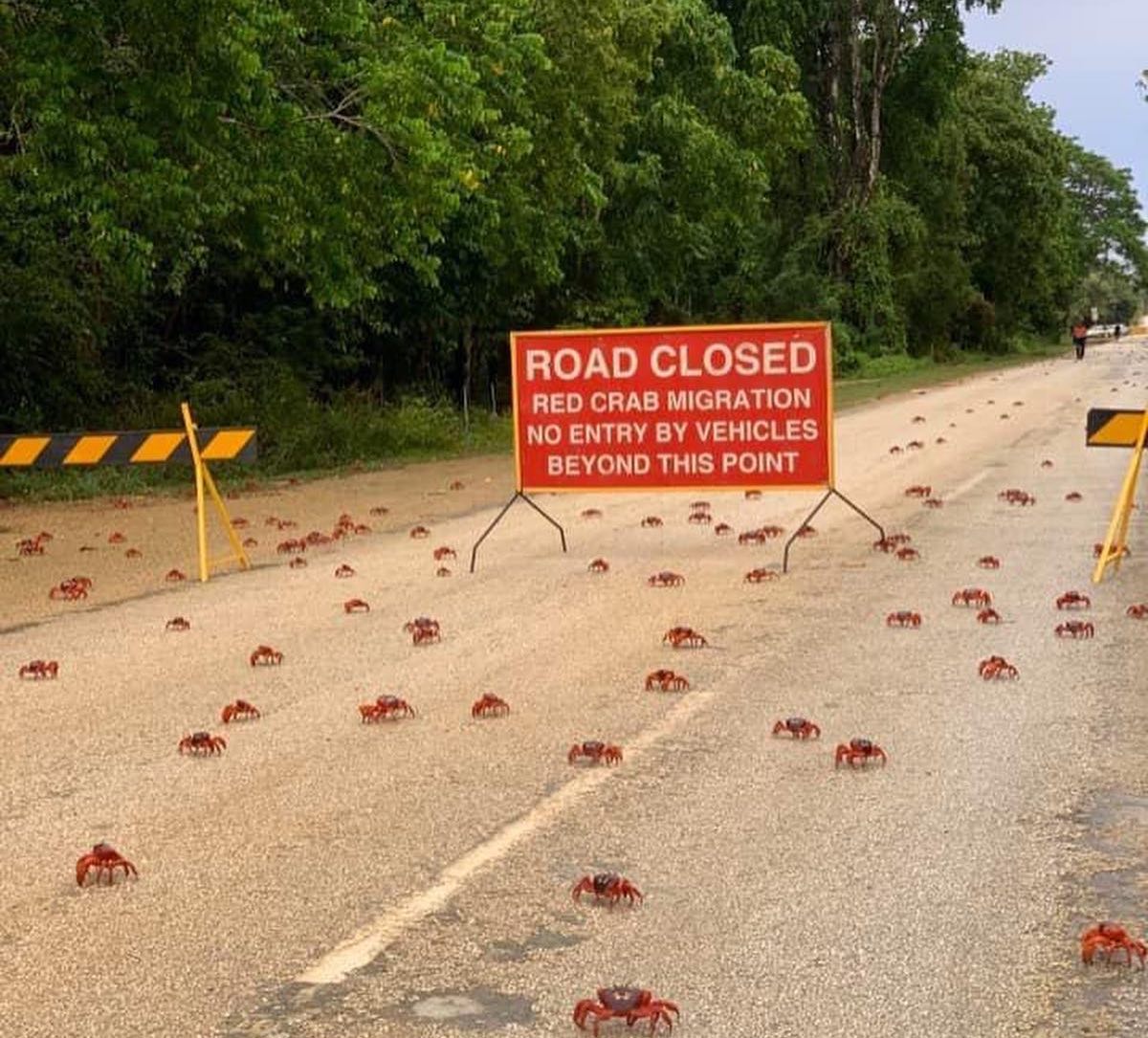 Road closure. Image from Christmas Island Tourism/Facebook.
Road closure. Image from Christmas Island Tourism/Facebook.
Last week, some residents were unable to leave their neighbourhood due to the sheer number of crabs on the roads.
To reduce the number of roadkills, authorities have also erected temporary road barriers to funnel red crabs towards this dedicated "crab bridge" which was built across one of the busiest roads on the island.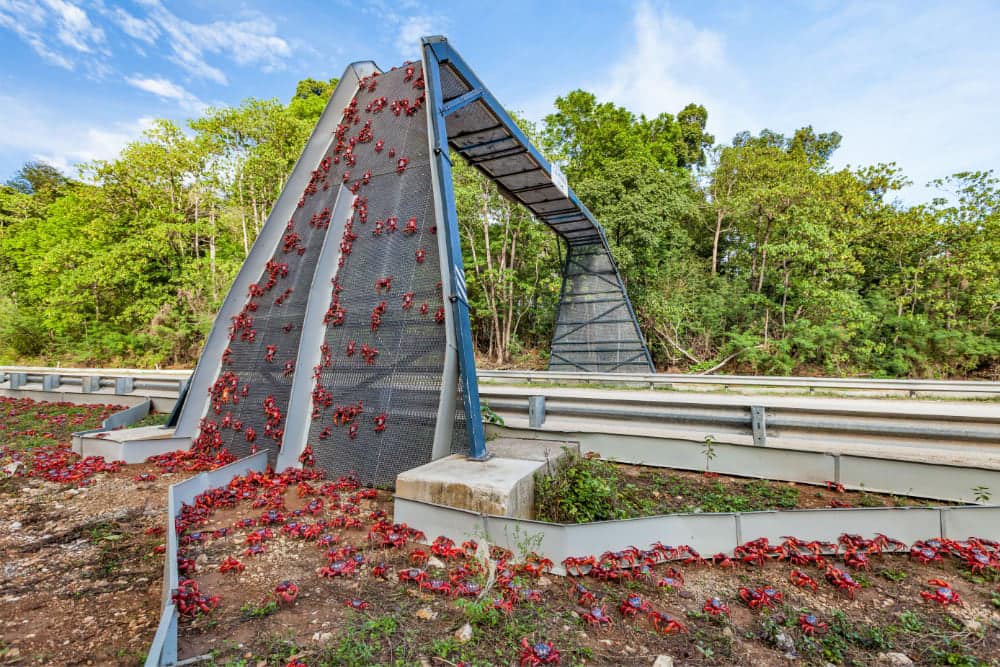 Crab bridge on Christmas Island. Image from Kwame Boafo JP/Facebook.
Crab bridge on Christmas Island. Image from Kwame Boafo JP/Facebook.
Armed with a rake, residents also helped keep these creatures safe off roads with busy traffic.
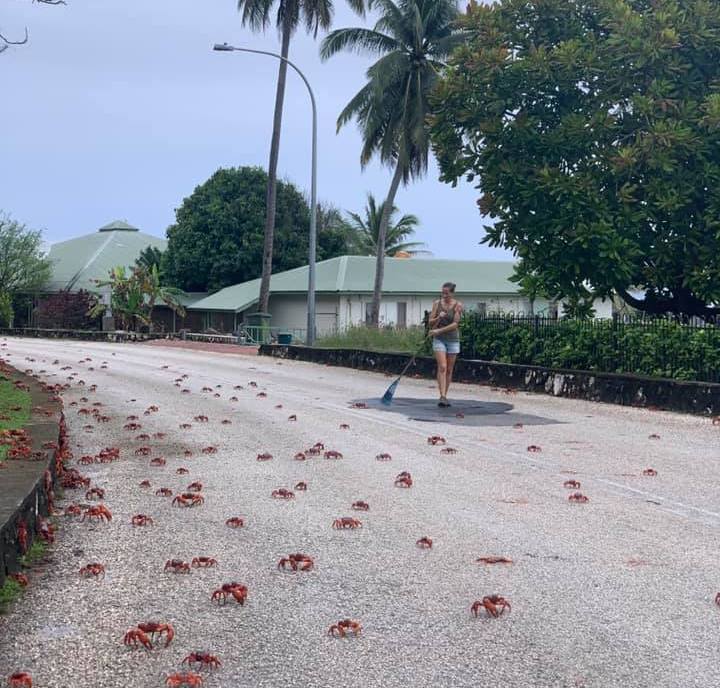 Locals raking crabs. Image from Christmas Island Tourism/Facebook.
Locals raking crabs. Image from Christmas Island Tourism/Facebook.
Adapting to the crabs' migration, some cars on the island have wheels that deflect crabs.
That's pretty cool.What happens after the mass migration?
Mating
After reaching the coast, male red crabs will first dip into the water to regain some moisture before digging burrows in lower terraces where they mate with the females.
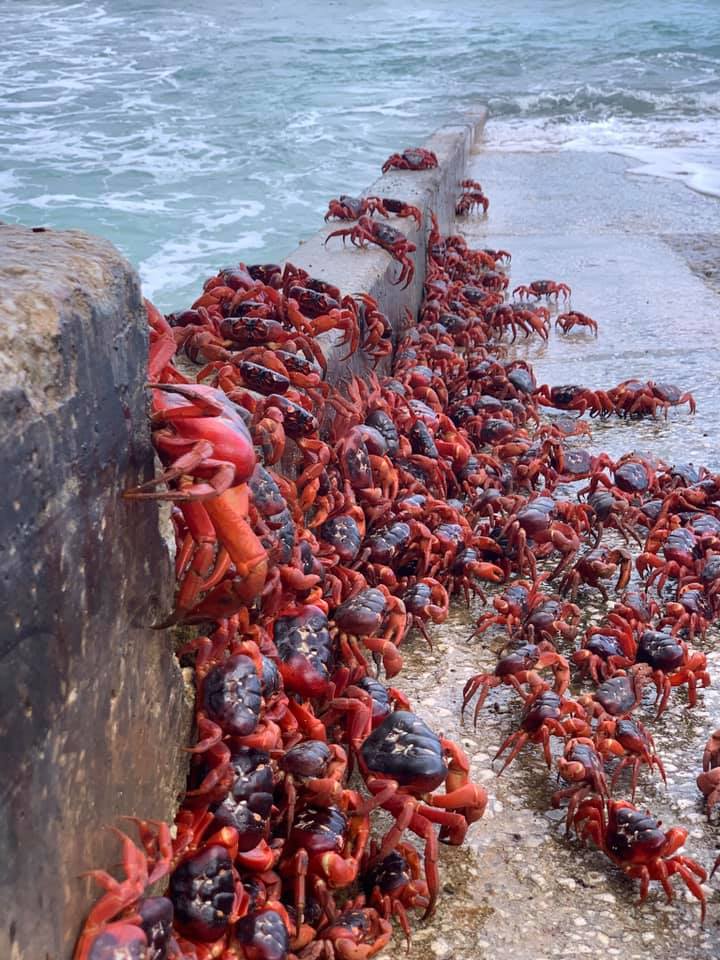 Image from Island Care Christmas Island/Facebook.
Image from Island Care Christmas Island/Facebook.
Once the deed is done, male red crabs will make the trek back to land while the female crabs remain in the burrows for about two weeks to lay eggs.
Each female red crab can lay up to 100,000 eggs, all of which are held in the female's brood pouch.
Spawning
The entire process of migration and mating is tied to the lunar cycle – the phases of the moon.
Coinciding with the last quarter of the cycle, egg-laden female red crabs will leave their burrows and gather on the shoreline to release their eggs.
This process known as spawning occurs before dawn when high tides recede.
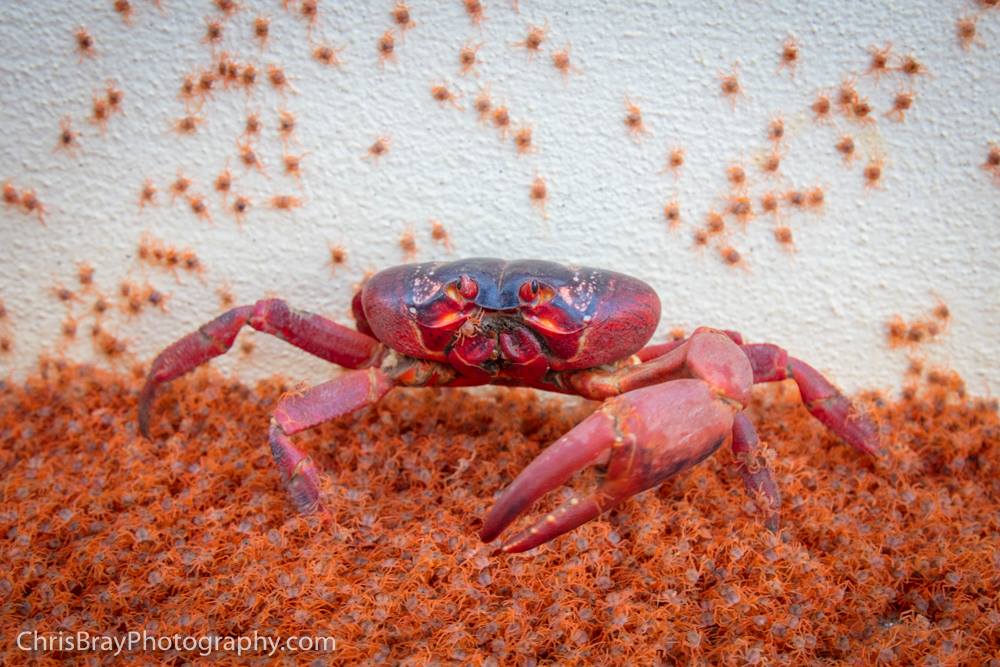 An adult red crab, which is about the size of a tea cup, surrounded by tiny winy baby red crabs. Image from Chris Bray Photography/Facebook.
An adult red crab, which is about the size of a tea cup, surrounded by tiny winy baby red crabs. Image from Chris Bray Photography/Facebook.
Spawning may take place for five to six consecutive nights, and after which, the female red crabs will return to their habitat on land.
This year, spawning is expected to happen from Nov. 28 to Nov. 30, and Dec. 28 to Dec. 30.
Eggs and larvae
After the eggs are released into the water, they hatch into larvae.
Clouds of larvae swirl near the shore before being swept out to the ocean by receding waves.
While the female adult crabs release thousands of eggs during spawning, not all will survive.
A good number will be eaten by other marine life such as manta rays and whale sharks.
After about a month, the surviving larvae will eventually develop into prawn-like animals called megalopa that return to the shore.
Near the shore, the magalopae will turn into young crabs. The young crabs then crawl out of the water and onto the land, like their parents.
Here's a really cute video of these baby crabs which are measured to be only 5mm across:
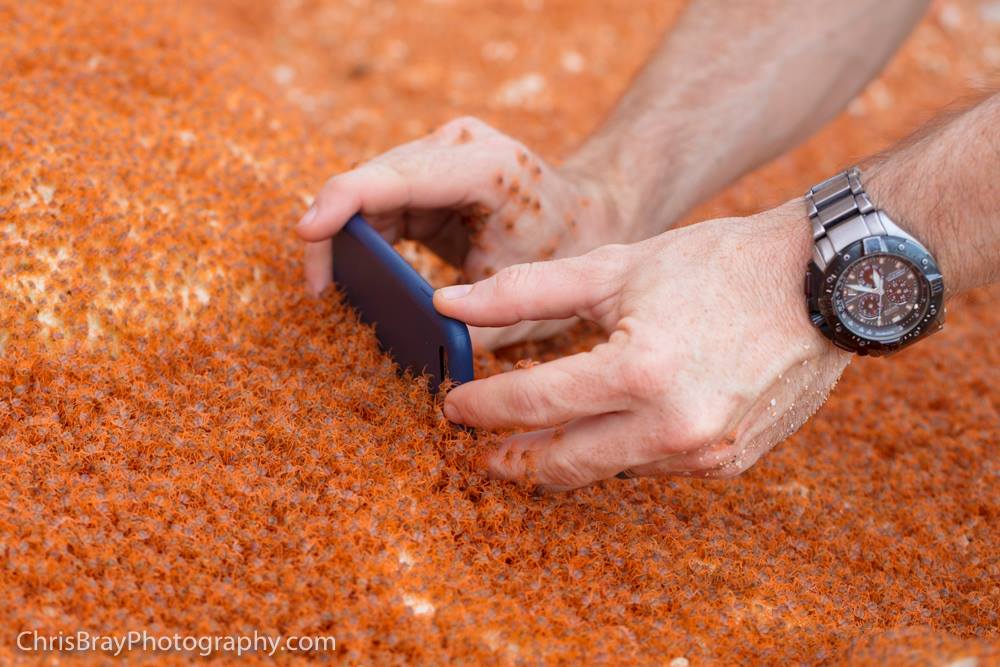 Baby red crabs. Image from Chris Bray Photography/Facebook.
Baby red crabs. Image from Chris Bray Photography/Facebook.
The baby red crabs' venture inland takes approximately nine days, and locals have adapted to it in the same way that they have adapted to the adult red crabs' migration.
To keep these babies safe, Christmas Island residents may use a leaf blower to shoo them off the roads and away from incoming vehicles.
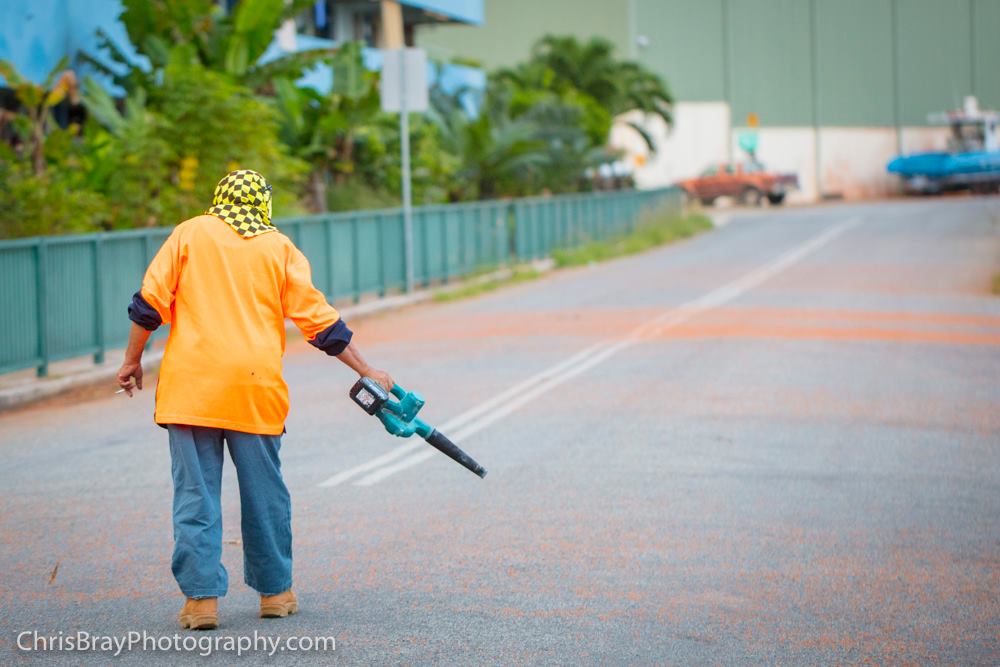 Using leaf blower. Image from Chris Bray Photography/Facebook.
Using leaf blower. Image from Chris Bray Photography/Facebook.
After arriving safely in their inland forested habitat, the juvenile crabs are said to "disappear" for the three years before emerging from the forests again when they are ready to mate.
And the cycle repeats.
Related story
Top image from Australian High Commission in Canada/Facebook and Úc Ơi/Facebook
If you like what you read, follow us on Facebook, Instagram, Twitter and Telegram to get the latest updates.
